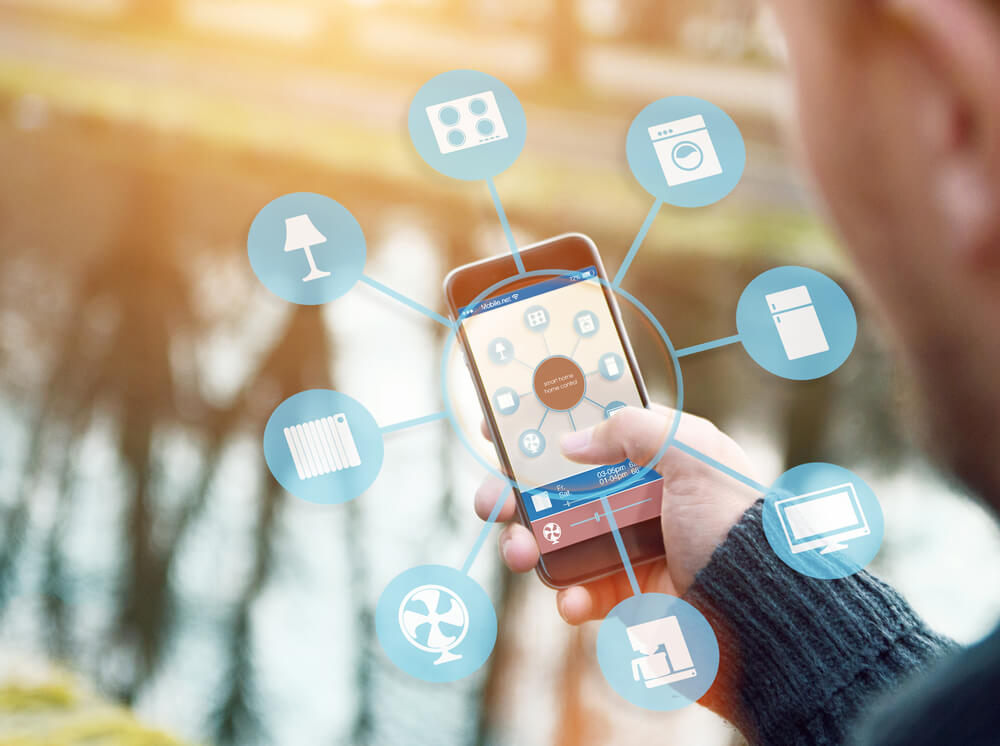The State of Automated Home Technology

The doors to automated home technology may appear to have opened widely in recent years, but they haven’t fully begun to unbolt. Automated thermostats, door locks, blinds, lighting and electrical components are providing residents with modern creature comforts in and away from homes using personal mobile devices. Many gadgets are available at Big Box retailers and install easy. Yet there is a disconnect in managing multiple devices and providing residents and management a seamless home automated process.
Challenges of automated home technology for property managers
Some argue that technology is creating more of a headache for property managers and can come at a price. Establishing a single, cost-effective network enabling the technologies to work together that enables property managers control is probably the single greatest challenge.
Reprogramming a lock or thermostat when a resident leaves requires management to take action, usually device by device. Some of the devices have to be reset to factory defaults.
“When a resident moves in, connects to the device, and puts it on their network there is no way for management to gain access to it again, or any other subsequent residents without going to each device and doing a factory reset,” says Henry Pye, Vice President of Resident Technology at RealPage, Inc.
Compounding the issue are continuous upgrades of personal devices like cell phones and smart tablets that can be programmed to raise or lower temperatures, lock and unlock doors, turn on the lights from the other side of the country and perform other functions.
Risk increases with growth of smart home technology
Smart home technology is growing in leaps and bounds. North America’s smart home market grew a whopping 62 percent with 16.9 million installations in 2015, according to Berg Insight’s “Smart Homes and Home Automation – 4th Edition” published in May. Only 16 percent of the installations were multi-function or whole-home systems. The rest were point solutions designed for a specific function like a thermostat or smart door lock.
Nearly 10 percent of all household in North America have some sort of smart device and Europe is gaining ground. Berg Insight predicts that point solution purchases will fuel growth and that 36 million homes in Europe and North America will be smart by 2017.
However, as smart home technology grows, so does risk, housing leaders say. Shared information within the devices — records of when residents lock their doors or turn on lights — could indicate times when the home is occupied and invade a resident’s privacy.
Earlier this year, the National Apartment Association began addressing the privacy, safety and risk associated with home technology. A committee was formed to draft a white paper outlining guidelines on available technology, scalability, longevity, privacy policies, data creation and data ownership and security of smart home technology. The paper is due this fall.
Cloud-based solutions the answer to managing systems
Onsite servers that are essentially a closed network manage most higher-end single-family smart home systems installed today. The user sends a signal from a personal device or fob to a small server or gateway in a closet or the basement which is relayed to the device.
However, the initial investment and monthly service fees are pricey. Pye believes cloud-based systems are the only way to cost effectively reach every home.
“The most likely future is where devices like light switches and door locks are controlled, but not by an onsite gateway or server,” he said. “In the future, communications come directly from the cloud. When the resident or homeowner grabs their iPhone, their Google device they’re talking to the controller in the cloud which in turn is talking to this smart home product.”
Ideally, management will also be able to access the same devices through the cloud for make-ready, maintenance and basic life safety.
Apple and Google are leading the pack on laying groundwork in single-family housing access control for linking smart home devices through cloud technology. Apple HomeKit and Google Brillo are new products designed to bridge the gap.
Introduced two years ago, HomeKit has nearly two dozen approved smart home devices on the market. Door locks, plugs, thermostats, sensors and shades are regulated through Apple HomeKit’s cloud controller. For example, soon you will be able to have HomeKit open a garage door, turn off an alarm system and unlock a home’s door by just entering your driveway.
Google is developing a similar solution with first-approved devices planned for later this year.







